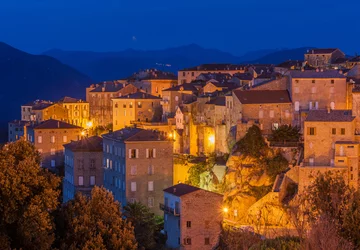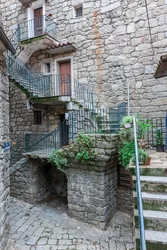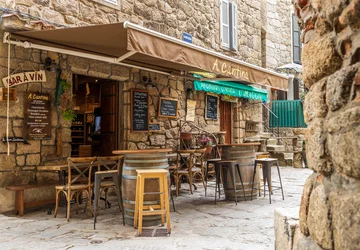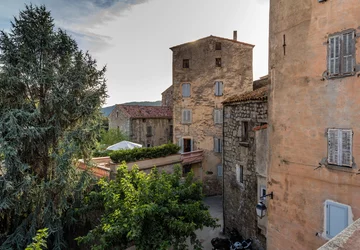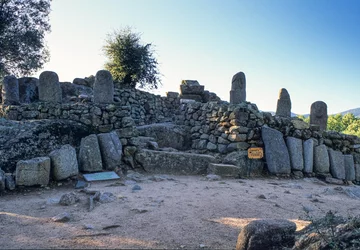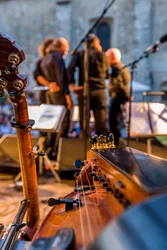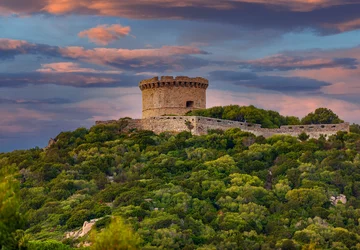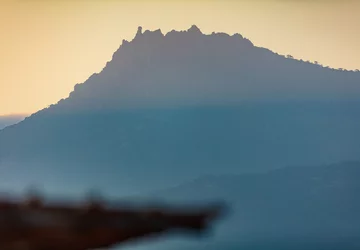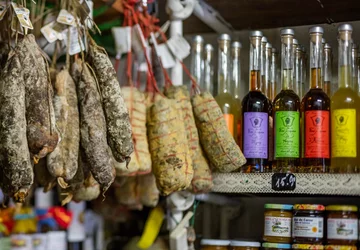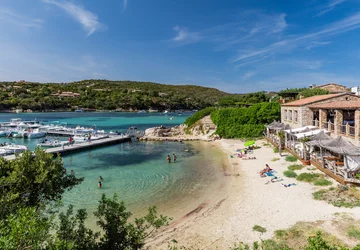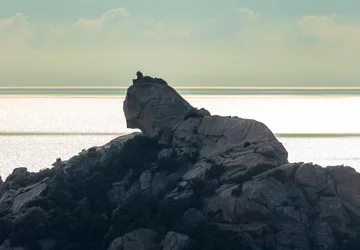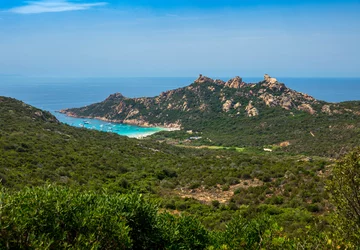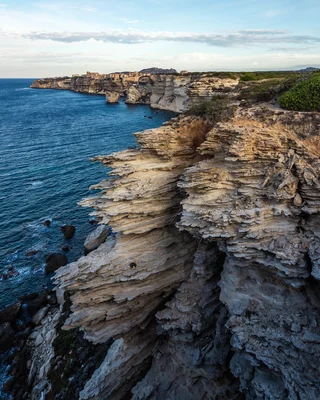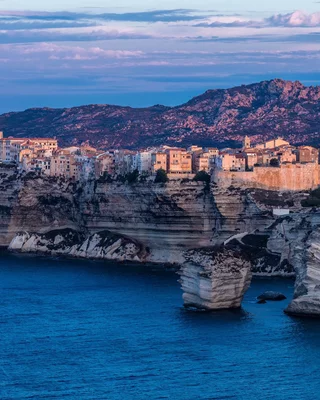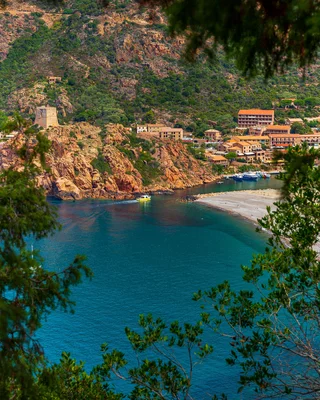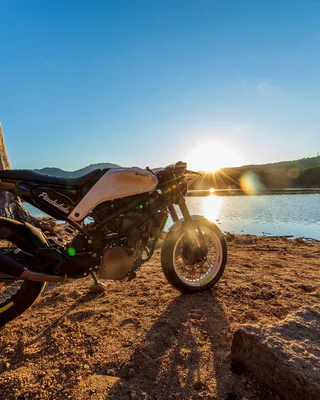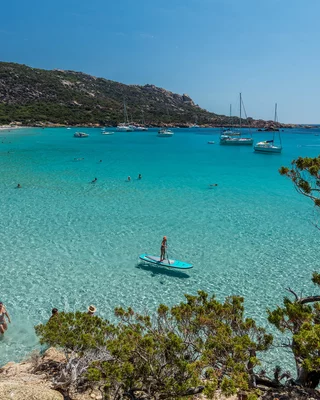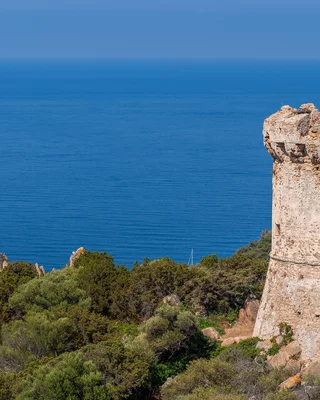Sartène, a cultural stopover in southern Corsica
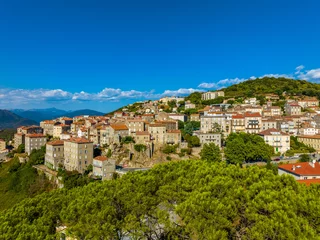
During his trip to Corsica, Prosper Mérimée discovered this town on a rugged rocky promontory overlooking the Rizzanèse Valley and its pure Corsican tradition, defining it as the most Corsican of Corsican towns.
Located in the south-west of the island, Sartène , with a surface area of 200 km2, is Corsica's largest commune, with just 3,500 inhabitants. It is the island's first administrative district and the sub-prefecture of southern Corsica.
Plan your customized trip now
Visit the old town of Sartène (Sartè) in Valinco :
The imposing medieval town of Sartène, perched on a rocky outcrop, is no less welcoming. In 1551, the town was fortified against barbarian raids, so that all the inhabitants of the surrounding hamlets could find refuge there. Sartène's history has always been turbulent: peasants versus large landowners, neighbourhood battles, vendettas between the Rocca Serra and Pietri families....
You'll cross the Scaledda bridge to reach the central square, known as Place de la Libération, a veritable meeting place where the people of Sartène are accustomed to chatting in the shade of elm and palm trees. The town is built around this square: the Santa Anna district will take you back to the Middle Ages, you'll wander through the narrow streets and jostling houses of the old Petraghju district, and you'll contemplate the échauguette (a 16th-century Genoese tower) listed as a Historic Monument. It's a delight to stroll through the elegant yet robust buildings of the old town! The steep streets, vaulted passages, staircases, small squares and gray granite houses are a photographer's delight.
Discover it for yourself!
A leap into prehistory
Whether you're a novice or an expert in this field, the region offers a multitude of sites to visit. Start with the Musee de Préhistoire et d'Archéologie corse , located high above the town , which displays the island's archaeological remains. Exhibits range from the Neolithic to the Iron Age. Take a guided tour of the Filitosa archaeological site and discover its 70 menhir-statues, some of which date back to 3300 BC. To the south, the archeological site of Cauria reveals a mysterious Corsica , where pagan rituals were used for the passage to the afterlife: the megalithic alignments ofI Stantari, those of Renaghju and the Funtanaccia dolmen are 3 emblematic sites.
Catenacciu procession
In the square, climb the steps of the characteristic Sainte Marie church, where you'll see the 30kg cross and 17kg chains carried barefoot by the penitent on Good Friday. This moving Way of the Cross attracts 5,000 people every year on the Friday before Easter , and the atmosphere is serious and austere. On that evening, a man whom no one but the priest knows, dons a red robe and hood to relive Christ's martyrdom to the sound of the psalmody "Perdono, mio Dio" and the chains dragging on the floor. In this way, he shows his faith because he has committed major sins. Along the way, he must fall 3 times, surrounded by a crowd whose emotions oscillate between mystical excitement and anguish. At the end of the 1.5 km ordeal, the catenaccio enters the church and disappears. Mass can now begin.
Le cœur d'hommes de Sartène
With its 6 singers, this group performs in Corsica, Europe and around the world, taking you on a journey to the heart of Corsican polyphony . The group was founded by Jean Paul Poletti in 1995. Keen to combat the loss of creative identity and acculturation, he and his group tackle traditional repertoires, both secular and sacred, and succeed in conveying the emotion of the Corsican soul. These songs are essentially masculine, sung a capella, and form an integral part of Corsican culture.
What to do on vacation in Sartène
Hiking and beaches in the south
Ideally located, Sartène offers a wide variety of activities. Why not head down to the seaside to the Casa di Roccapina, a former cantonal house on the Col de Roccapina offering exhibitions, an audioguide show and discovery trails? Take the opportunity to admire the lion, the elephant and the tower, before diving into the beach of the same name, not far from Cala d'Arana .
A beautiful walk awaits youfrom Campomoro, Corsica's largest Genoese tower dating from the 16ᵉ century. Visit it for a superb view of the bay! Follow the coastal path to the Senetosa lighthouse and perhaps to the tranquil fishing port of Tizzano, the promise of an idyllic hike through flowery scrub, wild sea and dreamily shaped rocks.
For the more sporty, we recommend a hike called the Omu di Cagna , starting from the hamlet of Giannuccio, 30 km from Sartène. The aim is to reach this astonishing rock, balanced on another rock at an altitude of 1,217 metres, and enjoy an exceptional view of Corsica's far south, the Gulf of Valinco (Propriano) and Sardinia. Make sure you bring proper walking shoes, as the trail is rocky. If you like legends, be sure to hear the one about Omu di Cagna, where an ogre was transformed into stone by a fairy.
You'll have no trouble finding beautiful beaches in the area, but for those who love wide-open spaces and prefer the lapping of waves to the voices of happy tourists, we recommendthe beach of Capu Laurosu, pleasant and secluded,magnificent especially at sunset.
For a moment of freshness, head for the Spin'a Cavallu bridge (shaped like a "horse's back").horse's back"), listed as a historic monument in 1992, is one of the most beautiful bridges in Corsica, a Genoese and Pisan bridge spanning the Rizzanese river.
Discover the vineyards and estates of Sartenais
The red wine has the French AOC (Appellation d'Origine Contrôlée) label for Vin Corse de Sartène, as well as the European AOP (Appellation d'Origine Protégée) label. It stretches from the Taravo River to the area around Lion de Roccapina, covering 180 hectares. Unlike other regions of Corsica, vine cultivation in Sartène began late, towards the end of the 18ᵉ century. The vineyard enjoyed real success thanks to the planting of local and imported grape varieties, on an airy, porous and arid territory until the terrible attack of phylloxera around 1900, which destroyed almost everything. Today, Sartène wine is known for its strong personality. Sciaccarello, Niellucio, Barbarossa and Vermentino grapes are used to produce full-bodied whites with green highlights, full-bodied rosés and robust reds. Treat yourself to a wine tasting in one of the region's cellars, and take advantage of the opportunity to explore the small roads leading to it.
Our favorite:the Ortolo valley and the Saparale estate ! Discover the story of Philippe de Rocca Serra, who returned from Egypt in 1845 to fulfill his dream...
A wellness interlude
We invite you to visit Baracci , just a few kilometers from Propriano, for a moment of timeless pleasure. The history of the thermal baths will be told to you, and you can even imagine it as you look atthis building dating from 1881, with its remarkable architecture set in unspoilt countryside. The Caldane baths near Sainte Lucie de Tallano are also renowned.
The Olva nature park is also a place of pure pleasure. d'Olva for a few hours' stroll through a 22-hectare wildlife park and botanical trail. You'll meet donkeys, horses, chickens, ducks, goats and billy goats roaming freely amid the Corsican fragrance created by wild olive trees, cork oaks, mastic trees, heather, rockrose and immortelle.
Restaurant markets in Sartène, Corsica
You'll be spoilt for choice between restaurants, sheepfolds, bistros and pizzerias! You'll find the best Corsican flavors as you stroll around town . Some evenings feature Corsican guitar and song- find out more when you book your tour!
Tuesdays, Thursdays and Saturdays from 8am to 1pm are market days (producers and textiles) in the square, surrounded by terraces where tourists and locals mingle. Here, you'll find local delights in the midst of smells, flavors and colors...

In Sartène, look out for the Moulin Du Valinco, an olive oil and honey store that preserves treasures from yesteryear - you won't be disappointed!
